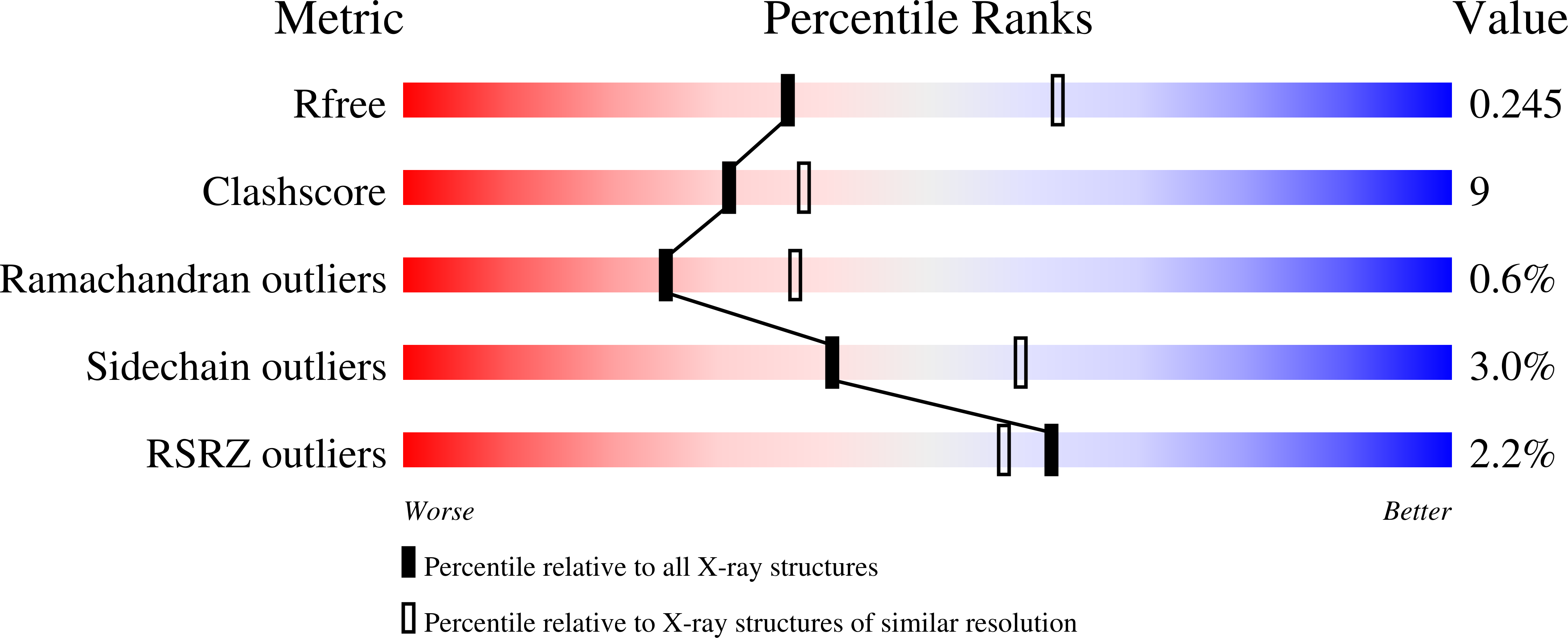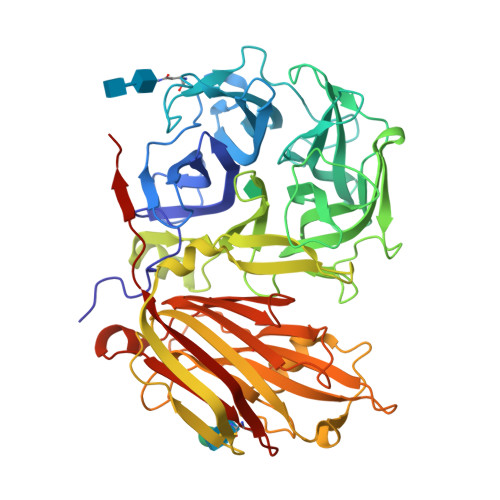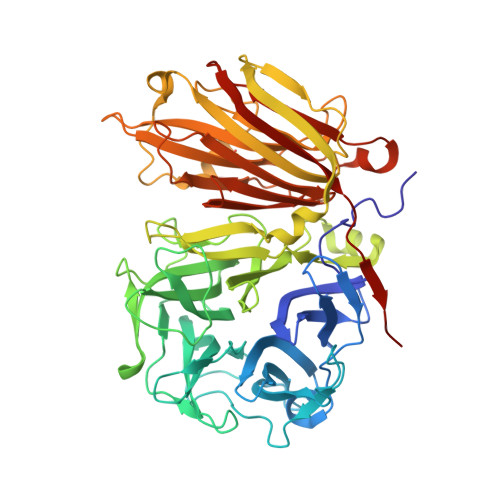Insights into the fine architecture of the active site of chicory fructan 1-exohydrolase: 1-kestose as substrate vs sucrose as inhibitor.
Verhaest, M., Lammens, W., Le Roy, K., De Ranter, C.J., Van Laere, A., Rabijns, A., Van den Ende, W.(2007) New Phytol 174: 90-100
- PubMed: 17335500
- DOI: https://doi.org/10.1111/j.1469-8137.2007.01988.x
- Primary Citation of Related Structures:
2ADD, 2ADE, 2AEY, 2AEZ - PubMed Abstract:
* Invertases and fructan exohydrolases (FEHs) fulfil important physiological functions in plants. Sucrose is the typical substrate for invertases and bacterial levansucrases but not for plant FEHs, which are usually inhibited by sucrose. * Here we report on complexes between chicory (Cichorium intybus) 1-FEH IIa with the substrate 1-kestose and the inhibitors sucrose, fructose and 2,5 dideoxy-2,5-imino-D-mannitol. Comparisons with other family GH32 and 68 enzyme-substrate complexes revealed that sucrose can bind as a substrate (invertase/levansucrase) or as an inhibitor (1-FEH IIa). * Sucrose acts as inhibitor because the O2 of the glucose moiety forms an H-linkage with the acid-base catalyst E201, inhibiting catalysis. By contrast, the homologous O3 of the internal fructose in the substrate 1-kestose forms an intramolecular H-linkage and does not interfere with the catalytic process. Mutagenesis showed that W82 and S101 are important for binding sucrose as inhibitor. * The physiological implications of the essential differences in the active sites of FEHs and invertases/levansucrases are discussed. Sucrose-inhibited FEHs show a K(i) (inhibition constant) well below physiological sucrose concentrations and could be rapidly activated under carbon deprivation.
Organizational Affiliation:
Laboratorium voor Biokristallografie, Faculteit Farmaceutische Wetenschappen, K.U. Leuven, Herestraat 49, O & N II, bus 822, B-3000 Leuven, Belgium.





















